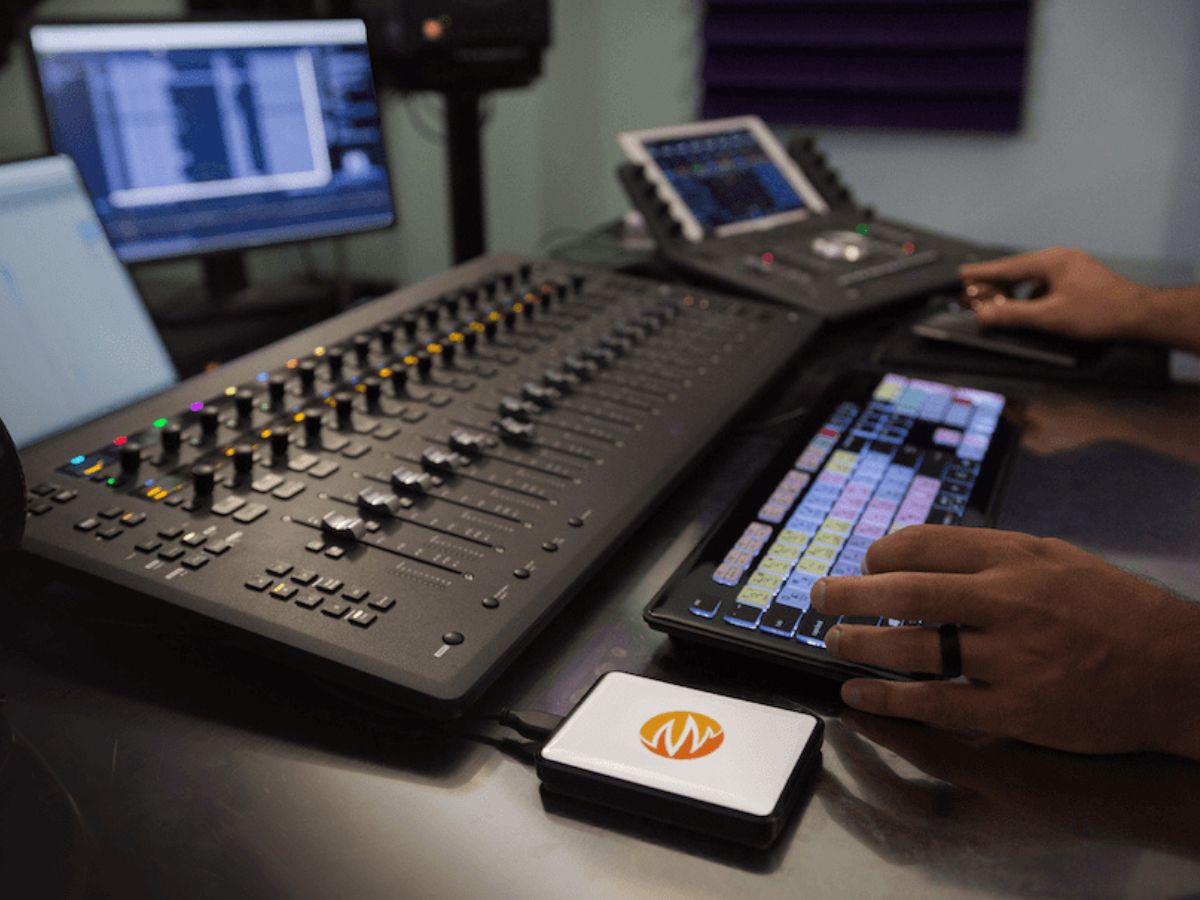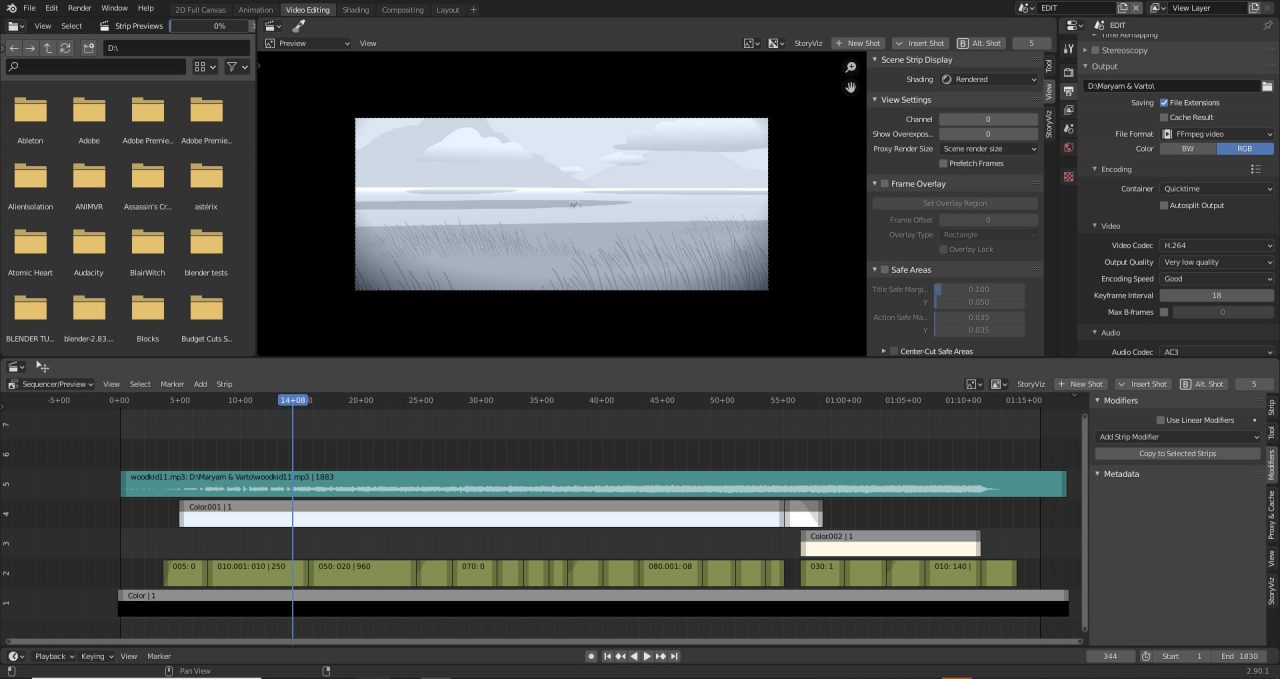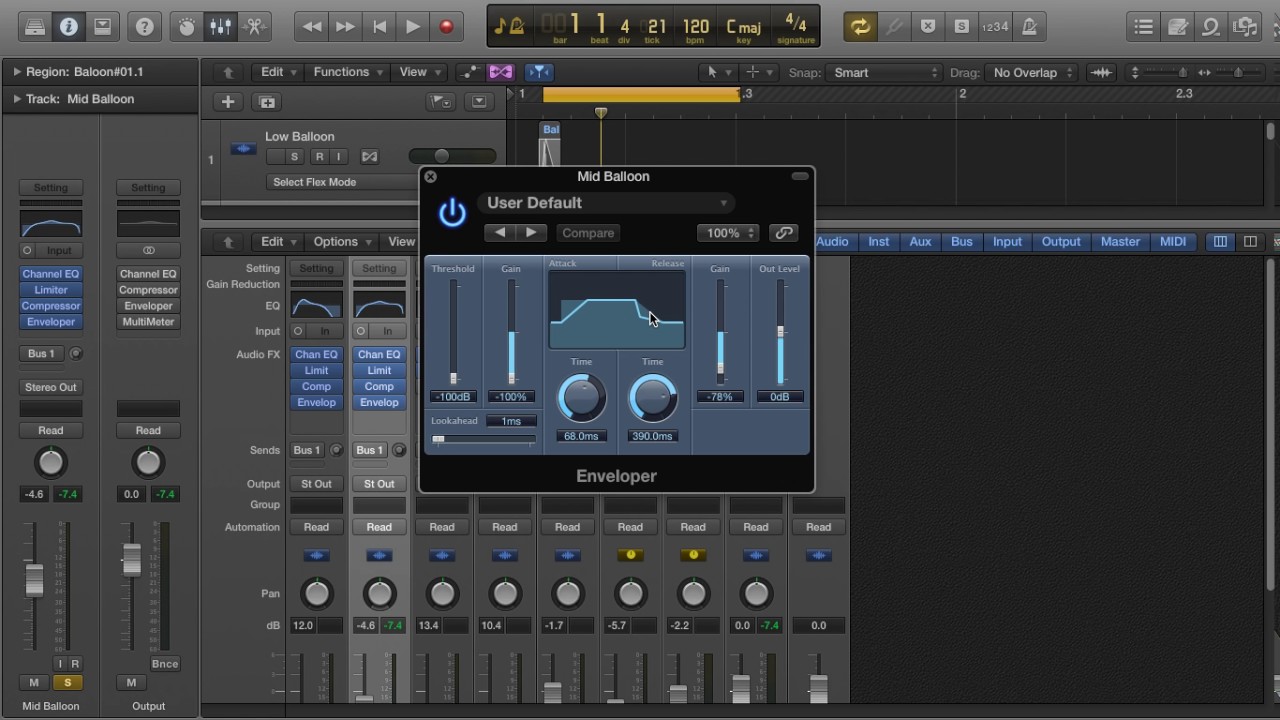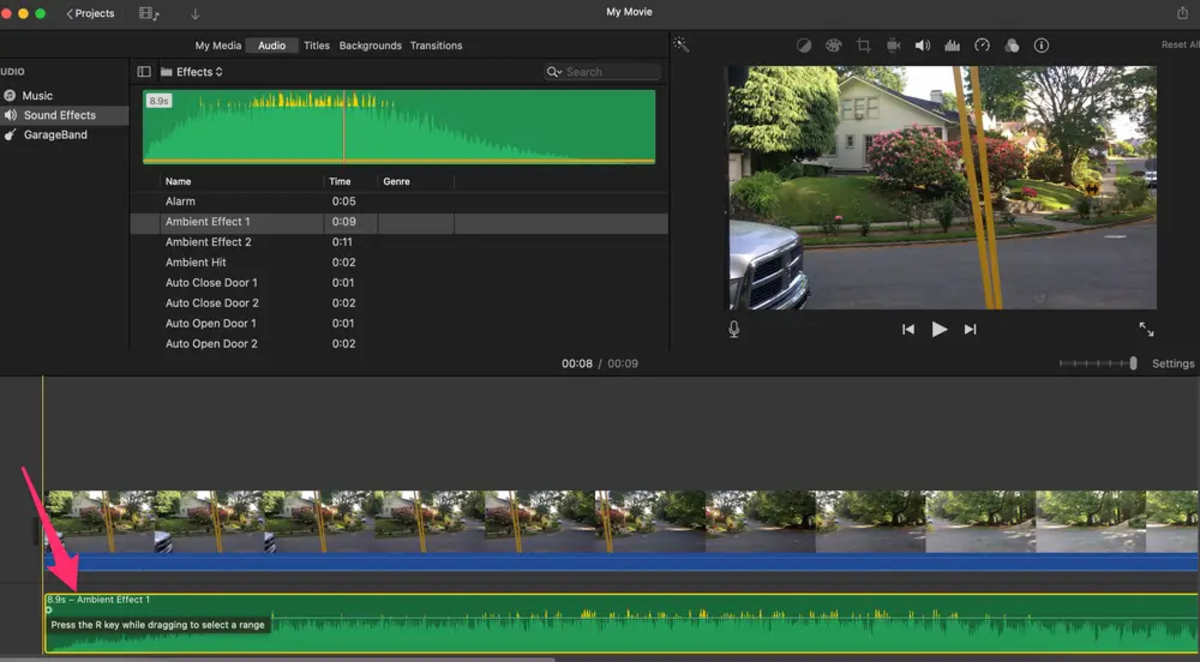Home>Production & Technology>Sound Effects>How Electric Shock Sound Effects Are Made


Sound Effects
How Electric Shock Sound Effects Are Made
Published: November 9, 2023
Discover the secrets behind creating realistic electric shock sound effects in this comprehensive guide. Learn how professionals use various techniques to capture and enhance the intensity of sound effects.
(Many of the links in this article redirect to a specific reviewed product. Your purchase of these products through affiliate links helps to generate commission for AudioLover.com, at no extra cost. Learn more)
Table of Contents
Introduction
Welcome to the electrifying world of sound effects! In this article, we will be exploring the fascinating process of creating electric shock sound effects. These impactful sounds have been a staple in the world of film, television, video games, and even theater productions, adding an extra layer of intensity and realism to various scenes.
Electric shock sound effects are often used to depict moments of high voltage electricity, whether it’s a dramatic lightning strike, an electrified fence, or a surge of power in a sci-fi setting. These sounds not only enhance the visual experience but also elicit an emotional response from the audience, bringing them closer to the action.
Behind these electrifying sound effects are skilled and creative sound designers, Foley artists, and audio engineers. These individuals seamlessly blend artistry, technical expertise, and a deep understanding of sound to create captivating auditory experiences. Through a combination of equipment, techniques, and their own imagination, they breathe life into the fictional world.
In this article, we will take a deep dive into the intricate process of creating electric shock sound effects. We will explore the artistry and techniques employed to capture, manipulate, and enhance these sounds. From the initial sound source to the final post-processing touches, you will discover the secrets of how these immersive and impactful sound effects are made.
So, buckle up and get ready to be shocked (in a good way!) as we explore the world of electric shock sound effects and the intricate artistry behind them.
Overview of Electric Shock Sound Effects
Electric shock sound effects are designed to replicate the intense and electrifying experience of high voltage electricity. These sounds are commonly used in various media productions to create tension, excitement, or to enhance the visual effects of electric-related scenes.
One of the key aspects of electric shock sound effects is capturing the sense of power and energy associated with electricity. These sounds aim to convey a strong and impactful auditory experience, often with a combination of sharp, crackling, and buzzing elements.
The range of electric shock sound effects can vary widely, depending on the context and desired effect. They can range from subtle buzzing sounds to simulate an electrical device to powerful and destructive lightning strikes for dramatic and intense moments.
These sounds are not limited to external electrical events but can also be used to depict internal shocks. For example, in science fiction movies, characters may have powers that generate electric shockwaves or energy blasts. The sound effects associated with these powers are critical in selling the believability and impact of these abilities.
When creating electric shock sound effects, sound designers use a range of techniques and tools to capture and manipulate the desired sounds. This can include recording real-life electrical sources, using specialized equipment to generate synthetic sounds, or a combination of both.
The ultimate goal of these sound effects is to immerse the audience in the scene and enhance their emotional and sensory experience. By carefully selecting and manipulating the sound elements, sound designers bring realism, excitement, and intensity to the visual storytelling.
Now that we have a general understanding of electric shock sound effects, let’s dive into the fascinating world of foley artistry and sound design techniques that bring these sounds to life!
Foley Artistry and Sound Design Techniques
In the world of sound design, foley artistry plays a crucial role in creating realistic and immersive electric shock sound effects. Foley artists are skilled professionals who specialize in producing and recording various everyday sounds to enhance the audio experience in films, TV shows, and other media productions.
When it comes to electric shock sound effects, foley artists employ a combination of creative techniques and everyday objects to produce the desired sounds. For example, to recreate the crackling and buzzing sounds of electricity, they might use a combination of crumpling aluminum foil, snapping electric cables, or even rubbing a comb against a glass surface.
One key aspect of foley artistry is the careful attention to detail and synchronization with the visual elements of the scene. Foley artists watch the visuals repeatedly and precisely time their sound effects to match the on-screen action. This synchronization brings a heightened sense of realism and enhances the overall impact of the sound effects.
Sound designers also utilize a range of professional audio equipment and software to enhance and manipulate the captured sound recordings. These tools allow them to fine-tune the electric shock sounds, adding depth, texture, and spatial effects to create a more dynamic and immersive audio experience.
In addition to foley artistry, sound designers may also use synthetic sound generation techniques to create or augment electric shock sound effects. They can use synthesizers, audio plugins, and other digital tools to produce and modify electrical sounds to fit the desired artistic vision.
Furthermore, layering and mixing techniques are crucial in creating complex and realistic electric shock sound effects. By combining multiple sound layers, each representing different aspects of the electrical event, sound designers can achieve a more authentic and impactful result. These layers may include elements like crackles, hums, pops, and high-frequency discharges, carefully balanced and mixed to create a cohesive and immersive sonic experience.
Post-processing and effects application play a final role in the sound design process. Sound designers utilize various software plugins and effects processors to manipulate and enhance the electric shock sounds further. This can include adding reverb to simulate the acoustics of a room, applying modulation effects for an otherworldly feel, or adding dynamic processing to control the intensity of the sound.
Overall, through a combination of foley artistry, sound design techniques, and the utilization of cutting-edge audio tools, sound designers and foley artists work together to create captivating and lifelike electric shock sound effects that elevate the audience’s auditory experience.
Next, let’s explore the initial stages of creating an electric shock sound effect, starting with the capture of the sound source itself.
Creating the Initial Sound Source
Creating the initial sound source for electric shock sound effects is a crucial step in the sound design process. This stage involves capturing or generating sounds that will serve as the foundation for creating the electrifying auditory experience.
There are various methods sound designers use to capture the initial sound source. One common approach is recording real-life electrical sources. This can include using high-quality microphones to capture the sounds of electrical arcing, sparks, or static discharges. By carefully positioning the microphones and experimenting with different recording techniques, sound designers can capture the raw, organic sounds of electricity.
Another approach is to generate synthetic electrical sounds using specialized equipment or software. This method allows sound designers to have complete control over the characteristics and nuances of the electric shock sound effects. They can manipulate parameters such as frequency, amplitude, and waveform to achieve the desired intensity and texture of the sound.
In some cases, sound designers may even combine these methods to create unique and layered sound effects. They may start with a recorded electrical source as a base and then augment it with synthetic elements to enhance the impact and richness of the sound.
During the initial sound capture phase, sound designers often experiment with different sound sources and techniques to achieve the desired result. They may explore using various electrical devices, such as Tesla coils, Van de Graaff generators, or even modified household electronics, to produce interesting and dynamic electrical sounds.
Furthermore, recording techniques are carefully chosen to capture the unique characteristics of electrical sounds. This can include close-miking to capture the intricate details and nuances, or using stereo techniques to create a sense of spatial depth and movement.
Ultimately, the goal of creating the initial sound source is to capture or generate a diverse range of electric shock sounds that can be later manipulated and combined during the sound design process. This ensures a rich and versatile library of sounds for sound designers to work with, allowing them to effectively create the desired emotional and sensory impact for the audience.
Now that we have the foundation of the sound, let’s move on to amplification and modulation methods, where the raw electric sounds are transformed and enhanced.
Amplification and Modulation Methods
Once the initial sound source for electric shock sound effects has been captured or generated, sound designers move on to the next stage of the sound design process: amplification and modulation. This step involves manipulating and enhancing the raw electric sounds to achieve the desired impact and intensity.
Amplification is a key technique used to increase the volume and power of the electric shock sound effects. This can be done by using audio amplifiers or software tools to boost the signal level and make the sounds more prominent and impactful. Through careful control of the amplification, sound designers can add depth, dynamics, and a sense of energy to the sounds.
Modulation techniques are also employed to add complexity and variation to the electric shock sounds. Modulation involves manipulating certain parameters of the sound, such as pitch, frequency, or amplitude, to create movement or rhythmic patterns within the sound. This can be achieved through techniques like frequency modulation (FM), amplitude modulation (AM), or using modulation plugins and software tools.
By applying modulation to the electric shock sounds, sound designers can create a sense of liveliness, unpredictability, and otherworldliness. These modulated sounds can add an extra layer of excitement and intensity to the overall auditory experience.
Addition of subtle effects such as distortion, saturation, or filtering can further enhance the electric shock sound effects. Distortion can add grit, roughness, and distortion that mimic the intense nature of electricity, while saturation can add warmth and richness to the sounds. Filtering can be used to shape the frequency spectrum, emphasizing specific frequencies and creating a more focused and impactful sound.
Throughout this process, sound designers experiment with different amplification and modulation techniques to find the right balance and timbre for the electric shock sounds. It is a creative and iterative process, where they continuously adjust and refine the parameters to achieve the desired effect.
With the amplification and modulation techniques applied, the electric shock sounds begin to take on the distinct characteristics that bring them to life. However, the process does not end there. The next step involves layering and mixing the sounds to create a cohesive and immersive sonic experience.
Layering and Mixing Techniques
Layering and mixing are essential techniques in the sound design process of electric shock sound effects. These techniques involve combining and balancing multiple sound layers to create a cohesive and immersive auditory experience.
Layering is the process of combining different sound elements to create a more complex and realistic representation of the electric shock. Sound designers may incorporate various elements such as crackles, pops, hums, and high-frequency discharges to capture different aspects of the electrical event. Each sound layer is carefully selected and adjusted to complement the others and create a nuanced and dynamic sound effect.
By layering multiple sound elements, sound designers can add depth, richness, and texture to the electric shock sound. For example, combining a crackling element with a buzzing element can create a more vivid and realistic representation of an electrical discharge. The layering process allows sound designers to go beyond the limitations of individual sound sources and create a more convincing and immersive auditory experience.
Once the sound elements are layered, the next step is mixing. Mixing involves adjusting the volume, panning, and effect application of each layer to create a balanced and cohesive sound. Sound designers carefully sculpt the sonic landscape, ensuring that each sound element occupies the appropriate space in the stereo field and blends harmoniously with the rest of the audio elements in the scene.
During the mixing stage, sound designers may also apply additional effects to enhance the electric shock sound effects. This can include adding reverberation to simulate the acoustics of the environment or applying spatial effects to create a sense of movement and depth. These effects further contribute to the realism and immersive nature of the sound.
Throughout the layering and mixing process, sound designers rely on their creativity and technical expertise to craft the desired emotional impact and intensity of the electric shock sound effects. They meticulously balance the various sound layers, ensuring that each element contributes to the overall effect without overpowering or conflicting with one another.
Once the layering and mixing techniques are implemented, the electric shock sound effects become a cohesive, dynamic, and immersive auditory experience. But there is one final step left in the sound design process – post-processing and effects application.
Post-Processing and Effects Application
In the final stage of the sound design process for electric shock sound effects, sound designers apply post-processing techniques and effects to fine-tune and enhance the overall sound.
One common post-processing technique is the application of equalization (EQ) to shape the frequency response of the sound. By boosting or cutting specific frequencies, sound designers can emphasize or reduce certain elements within the electric shock sound effects. This helps to refine the tonal balance and ensure that all frequencies are represented in a pleasing and impactful way.
Reverb is another commonly used effect in post-processing. It adds a sense of space and depth to the sound, simulating the acoustics of different environments. By adjusting the reverb settings, sound designers can create the illusion that the electric shock is occurring in a large, open area, a confined space, or even in a surreal, otherworldly setting.
Sound designers may also apply dynamic processing techniques such as compression and limiting. Compression helps to even out the volume levels within the sound, ensuring a more consistent and controlled output. Limiting, on the other hand, prevents the sound from exceeding a certain threshold, preserving the clarity and preventing distortion.
Sound designers can also experiment with various modulation effects to add an extra layer of texture and movement to the electric shock sound effects. Modulation effects like chorus, flanger, or phaser can create unique and interesting sonic variations, adding depth and complexity to the sound.
Furthermore, sound designers may employ additional effects such as distortion, saturation, or delay to further enhance the electric shock sound effects. These effects add character, grit, and a sense of power to the sound, making it more impactful and emotionally engaging for the audience.
Throughout the post-processing stage, sound designers continuously listen and make adjustments to achieve the desired effect. They iterate and experiment with different combinations of effects and processing techniques until they are satisfied with the final result.
Once the post-processing and effects application are complete, the electric shock sound effects are primed to be seamlessly integrated into the overall audio mix of the production. The result is a captivating and immersive auditory experience that brings the visual storytelling to life.
Now that we have explored the various stages and techniques involved in creating electric shock sound effects, let’s summarize and conclude our journey.
Conclusion
Electric shock sound effects are an essential component of audio design in various forms of media, from films to video games to theater productions. The artistry and techniques employed by sound designers, foley artists, and audio engineers allow them to create dynamic and immersive auditory experiences that captivate and engage the audience.
Throughout this article, we have explored the intricate process of crafting electric shock sound effects. We’ve delved into the role of foley artistry and the creative techniques used to capture and manipulate sounds. We’ve learned about the importance of layering and mixing to create a realistic and impactful sonic experience. We’ve also discovered the power of post-processing and effects application in adding depth, texture, and emotion to the electric shock sounds.
From capturing the initial sound source to amplification and modulation, from layering and mixing to post-processing and effects application, each step in the sound design process contributes to the creation of electrifying sound effects that enhance the visual storytelling.
Sound designers combine technical expertise, creativity, and a deep understanding of the emotional impact of sound to bring electric shock scenes to life. They carefully select and manipulate sound elements to evoke tension, excitement, and a sense of realism.
Next time you watch a movie or play a video game with intense electric shock moments, pay attention to the intricacies of the sound effects. Appreciate the artistry and effort that goes into creating these electrifying auditory experiences.
Electric shock sound effects add an extra layer of intensity and realism to the visual storytelling, enveloping the audience in a captivating sonic world. They immerse us in the scene, elicit emotional responses, and enrich the overall audio-visual experience.
So the next time you hear a crackling bolt of lightning, a buzzing electrical device, or a powerful surge of energy in your favorite media, remember the creative artistry and technical expertise that brought those electric shock sound effects to life.











